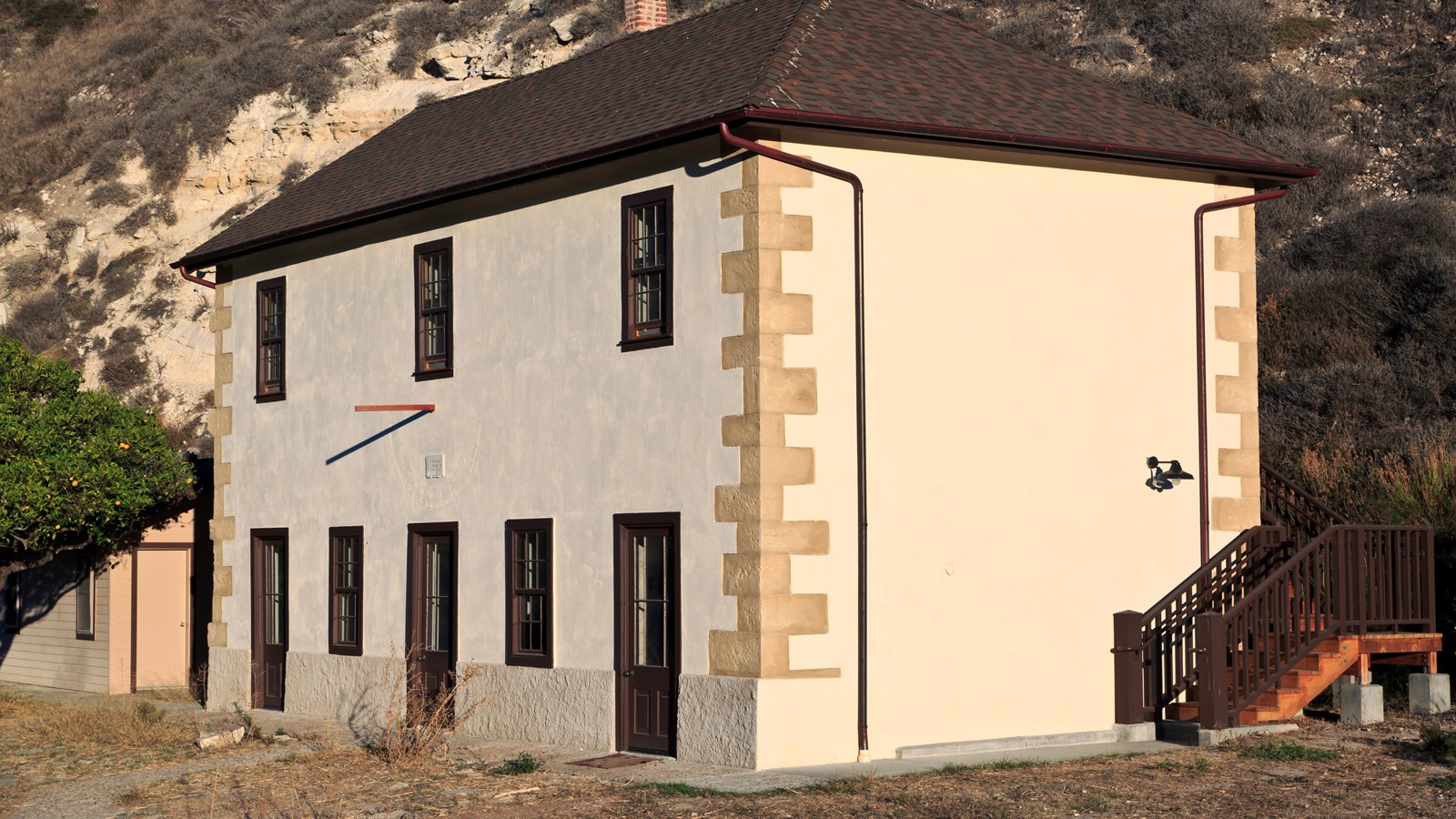Last updated: April 12, 2021
Place
Smuggler's Ranch House

Tim Hauf, timhaufphotography.com
Historical/Interpretive Information/Exhibits
While Scorpion Ranch was the headquarters for the east end island operations, Smugglers Ranch served as an outpost for laborers who worked in the olive orchard and the vineyards located in Smugglers Valley. Although early maps show a residence at Smuggler's as early as 1885, the building bears the date "1889." Like the two-story ranch house at Scorpion, the Smuggler's ranch house often is referred to as an "adobe," despite its construction of both rock masonry and adobe. The quarry for the limestone used in the construction of the ranch house and other structures can be seen off the west corner of the house. According to Gherini, early maps show that the ranch facility consisted of "...a residence, a separate one-room building for the foreman, a cookery, a bake oven, a tool shed, a supply shed, a stable, a well, a hog corral, and water closets."
More Ranching History
While the isolated island offered ranchers several advantages over the mainland, including no predators and the world's best fence (the ocean), it created special challenges as well. Supplying such a remote outpost was probably the biggest challenge. The transportation of supplies and stock onto and off the island was always an adventure-the distance to the mainland, rough seas, and expense made it very difficult. However, as former ranch superintendent Clifford McElrath wrote in his memoir On Santa Cruz Island, ranchers would adapt to the difficulties of isolated island life through self-reliance and by "learning to make do with what [they] had." Pier Gherini, former owner of the eastern portion of the island, wrote a humorous story in "Island Rancho" about the self-reliance of Joe Griggs:
"Joe could do most anything, except write. An expert rider, huntsman, and general ranch worker, Joe also was a mechanical whiz. He once took a 1915 Waterloo Boy tractor that had been "mothballed" because the early workmen wouldn't touch it, and used the parts to make a sawmill. The fact that we didn't need a mill in no way detracted from the ingenuity and skill that went into its making. All of these people had one common characteristic. They knew and loved the Island. Each in his own way was rugged and self-reliant. They took its beauties and hardships in stride."
Although livestock ranching on Santa Cruz Island began in the 1850s, it was under the direction of Justinian Caire beginning around 1880 that a variety of agricultural and ranching endeavors were developed in an effort to create a self-sufficient operation on the island.
In California's Channel Islands, Marla Daily writes that, "Buildings including several ranch houses, bunkhouses, barns, wineries, a chapel, mess hall, blacksmith shop, and saddle shop were constructed. Wherever possible, native island materials were used. Kilns were built for the manufacture of bricks and limestone mortar. Stones were quarried and cut to shape on the island. A resident blacksmith forged wrought-iron fittings, railings, and hinges used on many of the buildings. Employees included masons, carpenters, dairymen, team drivers, vintners, a wagon maker, cobbler, butcher, seasonal grape pickers and sheep shearers, a sea captain and sailors to run the company's 60-foot schooner. Hay, vegetables, and over a dozen varieties of grapes were grown, in addition to almond, walnut and other fruit and ornamental trees. Sheep, cattle, horses, and pigs were raised."
Since the island was too large to manage from the one main ranch in the Central Valley, other facilities, or out-ranches like the one at Scorpion, were developed. Completed in 1887, the two-story Scorpion ranch house, and later, the wooden bunkhouse (ca 1914), were home to ranch hands who tended the flocks of sheep and cattle and the crop fields on the broad plateaus and rich black soils on this eastern end of the island. Known as the "granary of the island," the Scorpion and Smugglers ranches were the bases that supplied much of the food and hay for the island operation.
Sheep ranching for meat and wool by descendants of Justinian Caire, the Gherini family, continued on the eastern end of Santa Cruz Island between 1926 and 1984. The Gherini era ended in February 1997 when the National Park Service acquired the last interest from the family. Today, the National Park Service is preserving the historic area so visitors always will have the chance to remember and understand this unique part of the island's past.
